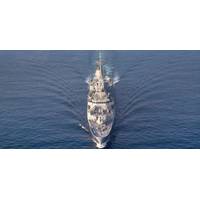
What is a Sonar Pulse and How Can it Injure Humans Under Water?
Last month, the Australian government revealed that its navy divers had sustained “minor injuries”, likely due to sonar pulses from a Chinese navy vessel.The divers had been clearing fishing nets from the propellers of HMAS Toowoomba while in international waters off the coast of Japan. According to a statement from deputy prime minister Richard Marles, despite HMAS Toowoomba communicating with internationally recognized signals, the Chinese vessel approached the Australian ship and turned on its sonar, forcing the Australian divers to exit the water.The incident prompted a response from
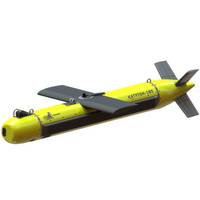
Kraken Robotics Supplies High-Resolution Seabed Mapping Sonar Solution to Australian Navy
Canadian marine robotics company Kraken Robotics said Monday it had supplied high-resolution seabed mapping sonar equipment to the Royal Australian Navy. Kraken delivered its KATFISH high-speed high-definition seabed awareness solution in Q2, and recently completed system integration and sea trials in Cairns, Australia. Kraken expects to provide additional in-service support including training, spares and operational support. "Continuing to build off successful KATFISH deliveries with various NATO navies, this represented Kraken’s first KATFISH system sale in the Asia-Pacific
NSSLGlobal Expands Portfolio with FarSounder’s 3D FLS
FarSounder and NSSLGlobal have joined forces to introduce FarSounder’s Argos product line to their defense, commercial, and leisure clients. These innovative Forward Looking Sonars (FLS) are used for safe navigation and obstacle avoidance. FarSounder’s technology is renowned in the cruise and leisure markets and is increasingly being adopted in both the Scientific/Exploration and Defence sectors both of which are moving towards Unmanned Surface Vessels (USV).Vessels are often operating in more challenging environments such as higher latitudes where there may be ice, poorly chartered areas
FarSounder Receives 8th Patent
FarSounder expanded its IP portfolio with the issuance of its 8th Patent, number 11,609,316. This US patent expands the company’s patent portfolio for its unique sonar system and its 3D processing.The invention provides a sonar system that includes a forward-looking sonar device that operates in an integrated fashion with one or more other sonar devices so that a boater can have a reliable navigation tool. The forward looking sonar can include a transducer array that takes a three-dimensional acoustic reading of the objects and seafloor ahead. The electronics that process the acoustic data can
MIND Technology earns MA-X Technology Patent
MIND Technology said that the U.S. Patent and Trademark Office granted a patent for MA-X technology. MA-X was engineered and designed by MIND's Klein Marine Systems unit and is an integrated single beam side scan and gap filler sonar.MA-X provides imaging of the nadir zone, or "gap", with the same interpretive characteristics of side scan sonar reportedly improving survey times by up to 40%. Klein's first product incorporating this technology is the MA-X VIEW 600. This system delivers focused 600kHz imagery (which is comparable to 900kHz resolution) with 100% bottom
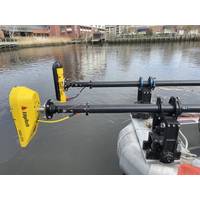
EdgeTech Announces Major Order from ECHO81
EdgeTech said it received a 'significant' order from ECHO81 for its 6205s2 Bathymetry Systems, 4205 & 4125 Side Scan Sonar Systems, 3400-OTS Sub-Bottom Profilers, and 2050-DSS combined Side Scan & Sub-Bottom deep tow systems. The order, valued at more than $2 million, will be available for direct purchases from ECHO81.CHO81 is EdgeTech's exclusive partner and distributor in the U.S. and Latin America for the 6205s2 and 3400 product lines. In late 2022, ECHO81 also purchased EdgeTech's 3000m rated deep tow system, Model 2300, which is equipped with advanced Bathymetry
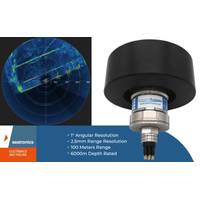
Seatronics Select ISS360HD Sonar
The ISS360HD Imaging Sonar provides a step change in performance in the scanning imaging sonar market. Providing a 2.5mm range resolution combined with a 1° angular resolution enables exceptionally high definition imagery from a highly compact sonar. With a range capability in excess of 100 meters the ISS360HD can suit a range of AUV, ROV and standalone underwater applications.
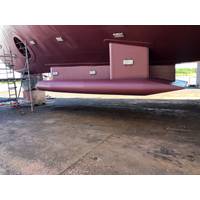
TDI-Brooks Upgrades Deepwater Multibeam
To enhance mapping efficiency, TDI-Brooks upgraded the multibeam (MBES) system on their vessel RV Gyre from the Kongsberg Maritime EM 302 to the EM 304 MKI. The EM 304 MKI is the successor of the highly acclaimed EM 302 which provides an increase of 75% swath performance at 6,000 meters. The EM 304 MKI can map shallow-to-medium water depths with high resolution and still map the deepest depths with great coverage.The modular EM304 MKI performs accurate, high resolution seabed mapping in shallow to deep waters at depths of more than 11,000m. The evolution of the EM 304, the EM 304 MKI broad range of
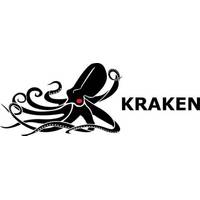
Kraken Gets $1.1M Synthetic Aperture Sonar Order for NATO Navy Clients
Kraken Robotics has secured a $1.1 million purchase order from an unnamed customer for several of its AquaPix synthetic aperture sonars SAS). "These systems will be integrated to Autonomous Underwater Vehicles (AUVs) for delivery to two distinct NATO navies. Delivery is expected in the first half of 2023." Kraken Robotics said .Kraken’s AquaPix is an off the shelf, configurable SAS that replaces high end sidescan systems at an, Kraken says, affordable price, while delivering higher resolution, range, and area coverage rates (ACR). Kraken says that the increased range
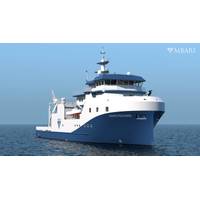
R/V David Packard to Sport Sonardyne’s Ranger 2 USBL
Monterey Bay Aquarium Research Institute (MBARI) selected Sonardyne's deepwater positioning tech for 50-m long R/V David Packard, its new scientific flagship.Named in honor of MBARI’s founder, David Packard, the vessel is being built to undertake a diverse range of missions in Monterey Bay and beyond, supporting the institute’s mission to advance marine science and technology to understand a changing ocean. Once operational, the ship will accommodate up to 18 researchers and will enable MBARI’s continued exploration of the deep sea, from the midnight zone to the abyssal
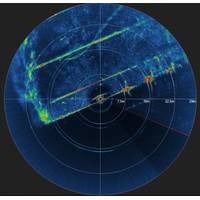
New Product: ISS360HD Sonar
According to Impact Subsea, the ISS360HD offers a 1° acoustic angular resolution, 2.5mm range resolution and a distance measurement range in excess of 100 m/328 ft. The sonar is depth rated to 6,000 m/19,685 ft.The manufactuere said the ISS360HD has a wide operational acoustic bandwidth capability; 600 to 900kHz which is fully used through CHIRP (Compressed High Intensity Radar Pulse) technology, designed to provide a resolution of 2.5mm when using the full bandwidth. A narrow acoustic beam, combined with a very short range resolution allows for high definition imagery.While designed

KATFISH Towed Sonar find niche in Defense, Offshore Energy
The war in the Ukraine, and the recent sabotage of the Nordstream underwater pipelines in the Baltic Sea, is bringing increased focus on the growing demand for underwater technologies capable of providing seabed intelligence, when and where it is most needed. Kraken Robotics is squarely focused on this market, with a suite of technologies designed to enhance image quality and reduce the time of traditional seabed surveys, providing actionable seabed intelligence in a timely manner.Kraken’s KATFISH system has been recently demonstrated at several international Naval exercises, exhibiting a
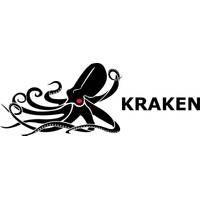
Kraken Receives $1.1m in Contracts for AquaPix SAS
Kraken Robotics announced contracts from two customers totaling $1.1 million for its AquaPix Synthetic Aperture Sonar (SAS). Due to confidentiality reasons the customers cannot be named but deliveries will go to the UK and Singapore for integration onto small man portable Autonomous Underwater Vehicles (AUVs). This represents Kraken’s first sale into Singapore and is reflective of our growing value proposition in the defense market of providing leading technologies at commercially competitive prices.Kraken’s AquaPix is an off-the-shelf, configurable SAS that replaces high end sidescan

MASSA: Innovation Inside its DNA
From designing the world’s largest transducer; to lobster-like surf crawling robots to detect and destroy mines; to creating a new bowling score system; to designing, building and delivering sonar systems used by the most powerful navy on the planet, Massa Products Corporation represents nearly eight decades of invention and innovation. Dawn Massa Stancavish shares her insights and experience as a female, third generation leader of this innovative sonar and ultrasonic products engineering company.Following in the footsteps of an invention and engineering pioneer is neither straight nor easy.
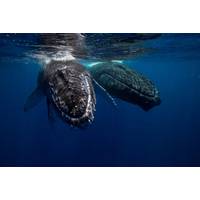
We’ve Discovered Why Some Whales Stop Feeding in Response to the Sound of Sonar
In September 2002, a number of beaked whales were stranded and killed in the Canary Islands during a NATO naval exercise. It was the first time we started to get a real understanding of the negative effects of sonar sounds on cetaceans, which includes whales, dolphins and porpoises.But why did the noise of sonar seem to affect beaked whales in particular, rather than other species of cetacean?In our new research, we’ve discovered that the response of each species to predators could explain why some whales and dolphins are more sensitive to this human-made noise.It was back in the early 2000s
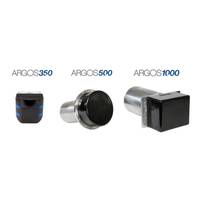
Farsounder Recommends Propspeed FoulFree for Sonar Transducers
Propspeed, an innovator of underwater foul-release coatings, received an endorsement from FarSounder, a pioneer in navigation and obstacle avoidance systems, which has tested the Propspeed Foulfree foul-release coating and recommends it for application by their customers, dealers and partner shipyards.“Our unique, patented technology is designed to paint a clear picture of what lies ahead underwater and along the bottom,” said Cheryl Zimmerman, CEO, FarSounder. “Marine growth on our transducers could limit the effectiveness of our products and potentially put a vessel in a hazardous

iXblue SAS for Ifremer's new 6000m-rated AUV
Ifremer, the French Research Institute for Ocean Science, has received its new synthetic aperture sonar (SAS) from iXblue. It will equip the institute’s new 6000m-rated Autonomous Underwater Vehicle (AUV) dedicated to deep sea exploration.This synthetic aperture sonar, the Sams-150, offers a seabed mapping solution suited to deep-sea autonomous vehicles. This interferometric SAS sonar allows for simultaneous real-time imaging and high-resolution bathymetric mapping of the seabed."With a swath width of 500m for a constant resolution of 6cm, our new Sams-150 sonar optimizes the compromise

Tech File: Sonar Equipment Critical to Search and Recovery
According to the CDC, 3,960 fatal unintentional drownings, including boating-related drownings, occurred in 2020. To locate the missing persons and provide closure to families, it takes dive teams time to assemble, gather their equipment, and begin searching sometimes vast bodies of water. Searching via divers is not only a long process, but it adds a considerable level of risk to an already dangerous assignment. One way to avoid that elevated risk is to use modern technology to help aid in the search. Side Scan Sonar technology allows a search and recovery team to scan local waterways quickly
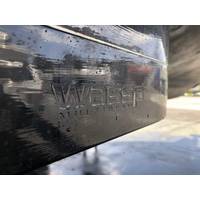
ENL Endorses Propspeed Foulfree for WASSP Multibeam Transducers
Propspeed received an endorsement from Electronic Navigation Ltd. (ENL). The innovator in wide-angle sonar technology relied on by anglers and oceanographers alike, ENL has tested the Propspeed Foulfree foul-release coating and found it to be effective for keeping their transducers clean and free from marine growth.“We installed our new WASSP wideband transducer on a 48-ft.Riviera in March 2020 and applied Foulfree,” said Gareth Hodson, managing director, ENL Group. “On the 4th of December, 2020 we hauled the boat out for hull maintenance, and there was no growth on the transducer.
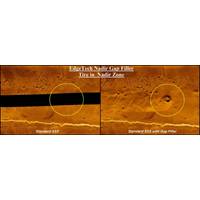
EdgeTech Debuts Nadir Gap-Fill Sonar
EdgeTech introduced a new method to provide nadir gap coverage on the EdgeTech 2205 sonar platforms. Complementing this new technology is SonarWiz from Chesapeake Technology, providing a software solution to support processing and mosaicking the new gap fill solution.The 2205 system with gap-fill technology was designed specifically for hosted platforms operating in shallow water or within close proximity to the bottom. The sonar is suited for Unmanned Surface Vehicles (USV) and Unmanned Underwater Vehicles (UUV/ AUV). The new 2205 system is available in a number of dual and tri-frequency
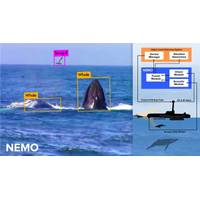
DARPA Funds Tech to better Detect Whales
Charles River Analytics won a $1.5 million follow-on contract from the Defense Advanced Research Projects Agency (DARPA) to develop a multi-sensor fusion module that incorporates deep learning to autonomously and accurately detect whales and other aquatic mammals.To protect marine mammals from collisions and sonar exposure, sailors must keep a vigilant lookout. Operators of remotely operated vehicles must also stay alert, and uncrewed surface vehicles’ (USVs) currently limited and narrow video feeds create risk, too. To reduce the strain on human lookouts, and give USVs the ability to steer clear

Ashtead Invests $1.4M in EdgeTech Sonar Tech
Ashtead Technology invested more than $1.4 million in a range of EdgeTech sonar imaging and underwater technology systems.The systems, which will be available for rent throughout the company’s international technology and service hubs, include the 4205-Tri-Frequency Side Scan Sonar System, the 4200-Side Scan Sonar System, the 2205-ROV Side Scan and Sub Bottom System, and the 2050-DSS Side Scan and Sub Bottom System.The EdgeTech 2050-DSS is the latest product to combine EdgeTech’s line of side scan sonars and sub-bottom profilers into one fully integrated system. The 2050-DSS comes complete
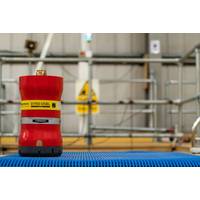
Tech: Sonardyne’s Ranger 2 Upgrade for Research Vessel Atlantis
Sonardyne’s Ranger 2 Ultra-Short BaseLine (USBL) underwater tracking technology is to provide improved support to oceanographic work from the research vessel Atlantis, including science expeditions in the human occupied submersible Alvin. The most updated version of Ranger 2 provides greater precision, speed and range tracking and replaces the existing Ranger 1 system, which has been supporting research from the ship since 2009.Additional upgrades include a new AvTrak tracking and telemetry instrument for Alvin, to support the increased depth rating of the submersible, from 4,500 m to 6,500 m.
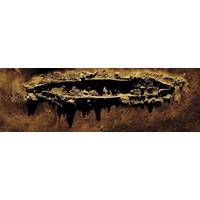
Dive Technologies Completes Sea Trials with Kraken Sonar, Batteries
Quincy, Massachusetts based Dive Technologies completed successful sea trials of Kraken’s Miniature Synthetic Aperture Sonar (MINSAS 120) integrated onto Dive’s Large Displacement Autonomous Underwater Vehicle (DIVE-LD). The DIVE-LD is also powered by Kraken’s pressure tolerant batteries.“Our team is incredibly excited to continue working with Kraken Robotics,” said Bill Lebo, Dive Co-Founder. “Following our previous successful sea trials with Kraken’s batteries, our team was keen to continue the positive momentum in our vehicle development with integration of
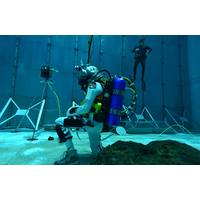
Coda Octopus Debuts Echoscope4G C500 Inspector System
Coda Octopus released the new Echoscope4G C500 Inspector system, designed as a modular, mobile platform to make sonar deployment simple and fast.The Inspector comprises a bespoke, lightweight integrated sensor platform supporting the ISAR rotator and the C500 sonar. The Inspector platform can be suspended and lowered from a single lifting point for near-surface temporary deployments or can be placed directly on the seabed using the extendable tripod legs included with the system. A single integrated sensor cable (ISC) connects the ISAR and C500 sonar to the 3D Connect integrated topside unit providing
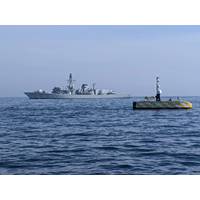
Autonomous Navigation – with or without GNSS
Director last year. He oversees the development and delivery of all products and systems, including those for marine autonomy applications. Before joining Sonardyne, Malik spent nine years working in the software industry on various development and systems integration projects. He has an MSc in Hydrographic Survey from University College London
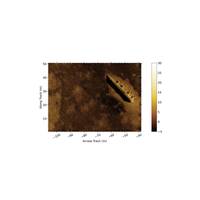
Kraken Robotics MINSAS Available on the Teledyne Gavia AUV
Teledyne Gavia, manufacturer of Gavia, SeaRaptor and Osprey Autonomous Underwater Vehicle (AUV), announced the integration of the Kraken Robotics MINSAS Interferometric Synthetic Aperture Sonar (SAS). The MINSAS is an off the shelf configurable Interferometric Synthetic Aperture Sonar (SAS) which replaces high end sidescan systems at an affordable price, while delivering significantly higher resolution, range, and area coverage rates (ACR). The increased range and resolution and associated higher ACR of SAS over traditional systems can significantly expand the capabilities of Teledyne Gavia AUV
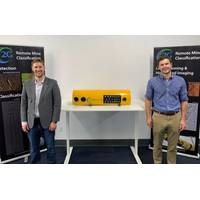
Founding CEO Gillham Steps Down at 2G Robotics
Jason Gillham, founding Chief Executive Officer of underwater laser scanner and imaging systems specialist, 2G Robotics, is stepping down from his role at the company in August 2020.Gillham will remain available to the board of directors and to parent company Sonardyne Group during the leadership transition period. Chris Gilson, 2G Robotics’ Product Development Manager, will take over as Acting General Manager.Founded in 2007 and headquartered in Ontario, Canada, 2G Robotics is a leader in mobile scanning and imaging technologies that improve the speed and accuracy of subsea inspection using
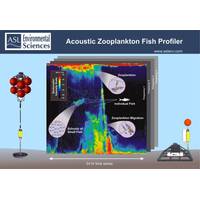
ASL's 2020 Early Career Scientist Contest
Enter ASL‘s 2020 Early Career Scientist Contest to Win the Use of an Autonomous Scientific Echo Sounder for Three-MonthsThe goal of this program is to support the oceanographic and limnological research community by lending, free of charge, a calibrated battery-powered Acoustic Zooplankton Fish Profiler (AZFP) (either 125/200/455/769 kHz or 38/125/200/455 kHz configuration), plus mooring cage and battery for a three-month maximum deployment period along with the support from ASL’s team of experts. This instrument loan program is open to early-career scientists and engineers, graduate

ASL Environmental Sciences Aids Sea Ice Study
In a collaborative effort with the Nunatsiavut Government and Dalhousie University to measure ice, water current and other physical and biological properties of the marine environment, ASL Environmental Sciences Inc. contributed a prototype Log Ice Profiling Sonar (LogIPS), and on February 15, 2020, the sonar was deployed on a taut-line mooring in the waters off Nain, Nunatsiavut, Labrador. The mooring also contained an acoustic doppler current profiler (ADCP) as well as data loggers for chlorophyll, turbidity, temperature-salinity and dissolved oxygen. The mooring was deployed through a hole
SonarWiz 7.6 Offers Enhanced Features, Functionality
Chesapeake Technology (CTI) announced enhanced features and new functionality for SonarWiz 7.6.A new suite of tools includes:• Forward Looking Sonar processing introduced, overlay FLS with other data sets• A–B change detection difference plot, spot changes in repeat sidescan surveys• 3D View window uses LOD for handling more points and for faster drawing• Improved drawing of bathymetry points in 2D View, now up to 10x faster• Multibeam Beam Performance Test introduced, verify full system performanceThe new Beam Test provides the user with information about each beam and
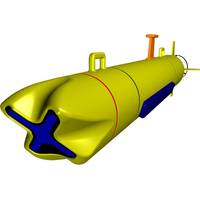
Klein Debuts Nadir Imaging Sonar for UUVs
Klein Marine Systems offers a Nadir Imaging Sonar for both the commercial and military unmanned vehicle markets. The μMA-X is designed to be scalable and modular, integrating easily to most AUV/ROV vehicles. The system uses Klein’s μEngine a compact, low-power architecture which uses Klein BLUE technology to provide imaging performance.Traditional side scan sonar systems suffer from a nadir gap in the center of the image directly under the path of the vehicle. The μMA-X system fills the gap and, when paired with conventional side scan, eliminates the need for overlapping survey lines to
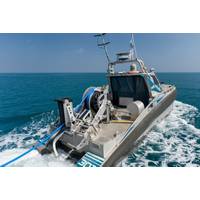
Elbit Integrated TRAPS Onboard its Seagull USV
Elbit Systems Ltd. has announced the integration of the Towed Reelable Active Passive Sonar (TRAPS) for Unmanned Surface Vessels (TRAPS-USV) onboard the company’s Seagull USV. The sea trials included multiple deployment and recovery cycles, towing at different speeds and transmission at various power levels. Integration of the TRAPS-USV enables the Seagull USV to perform Anti-Submarine Warfare operations on-the-move, substantially extending its operative range and further enhancing its flexibility. The integration of the TRAPS-USV follows the recent conversion for operation
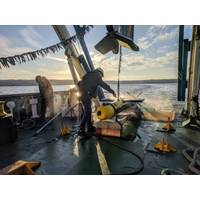
Kraken Debuts Ultra High Def Upgrade for AquaPix Imaging Sonars
Kraken Robotics Inc. announced it has achieved a practical resolution of 2 cm with a Commercial-Off-The-Shelf (COTS) Synthetic Aperture Sonar (SAS), Kraken’s AquaPix MINSAS.“For demanding subsea survey missions in mine countermeasures, infrastructure monitoring and oil & gas exploration; data quality is of the essence," said Karl Kenny, Kraken’s President & CEO. "The sensor that gets the job done most effectively is one that combines Ultra High Definition (Ultra HD) imagery with an extremely high area coverage rate. Kraken’s latest development, the next
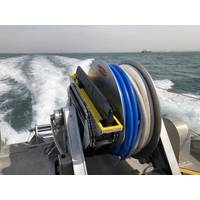
GeoSpectrum Launches TRAPS-USV
GeoSpectrum Technologies has launched a new and compact version of its Towed Reelable Active Passive Sonar (TRAPS) suitable for unmanned surface vessels (USVs).Named TRAPS-USV, this lighter-weight variant is designed to fit on almost any size vessel, including patrol boats and USVs, while retaining full active sonar acoustic capabilities and providing ground breaking low frequency active submarine detection off smaller platforms.With overall system weight reduced to approx. 40% of the already compact TRAPS, TRAPS-USV allows surface vessels and USVs as small as 12 meters long, to be equipped with
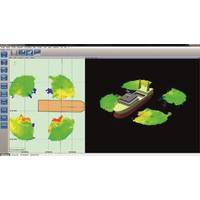
iXblue Unveils Real-time Static Bathymetry Sonar
iXblue announced the launch of its new SeapiX-C solid-state 3D multibeam sonar. This new sonar offers real-time georeferenced static bathymetry capabilities to marine works operators for instant monitoring and decision-making.“Increasing efficiency and reducing vessel-time is a key focus for all companies working in the Offshore industry. Because we strive to always bring new innovative solutions to support operators in their daily operations, we developed a unique static bathymetry solution dedicated to marine works,” explains Frédéric Mosca, Head of iXblue’s Sonar
Kongsberg Sells HUGIN AUV System to NIOT
Ocean Technology (NIOT), located in Chennai, India.According to a statement from Kongsberg Maritime India, the HUGIN AUV System ordered by NIOT is rated to a depth of 6,000 metres and will be equipped with a Kongsberg HISAS 1032 synthetic aperture sonar and EM2040 multibeam echosounder, designed for hydrographic and seabed classification applications.It will also carry a high-resolution colour still image camera, plus a range of environmental sensors for oceanographic surveys, including a magnetometer. This equipment array will facilitate the extremely demanding deep-sea scientific research and mapping
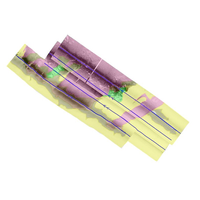
New Seabed Classification Software Launched
Coda Octopus has released the beta version of its software package for automated seabed classification. Integrated within the Survey Engine range, the software automatically interprets users' sidescan sonar data to detect and classify different seabed types.The seabed classification module uses AI (artificial intelligence) based methods to detect and classify seabeds in both type and geopgraphical extent from sidescan sonar data. The extent boundaries are instantly visible to the user for validation and QC and can then be exported for use in chart and map generation, direct import to the
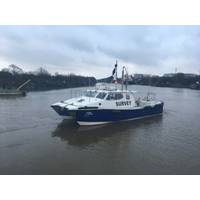
Peel Ports Group invests in Norbit Tech
based Survey Vessel ‘Royal Charter’ plus their upcoming delivery of an L3Harris ASV Ltd vehicle.The Norbit iWBMSh now commissioned on the Royal Charter has replaced the vessels previously installed multibeam system.With the vessel now delivering high quality bathymetric and backscatter hydrographic data, Peel Ports have additionally installed a Norbit iLiDAR laser scanner to provide further survey capability in its often interesting and challenging survey environments."Peel Ports are expert Hydrographic Surveyors, who have evaluated technology and identified ambitious operational challenges
Mitcham Announces MA-X Sonar Product Deliveries
Mitcham Industries said its Klein Marine Systems unit has completed initial deliveries of new products based on its MA-X "gap filler" sonar technology. Introduced earlier this year, MA-X technology is a cost-effective solution to filling the nadir gap that is characteristic of traditional side scan sonar. By seamlessly covering the nadir region, MA-X based products eliminate the need for overlapping survey lines, resulting in an estimated 40% increase in efficiency."The reaction by the industry to MA-X we believe has been nothing short of incredible,” said Guy Malden
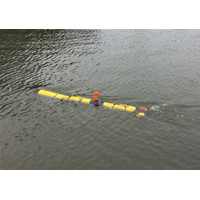
Blue Ocean Monitoring Orders AUV
Blue Ocean Monitoring Ltd. has recently purchased a new L3Harris Technologies Iver3 Autonomous Underwater Vehicle (AUV) to support their global survey operations.This innovative technology directly challenges traditional vessel-based, ROV and larger AUV survey techniques, delivering highly accurate survey data with significant reductions in project cost, time and risk. The AUV has been robustly engineered, is capable of operations to 200m, and is one of the smallest and lightest on the market, allowing for single-user deployment from small work vessels or directly from shore.Keith Wallace

Kraken Bids on International Mine Hunting Upgrade Program
Kraken Robotic Systems Inc., won a prestigious navy bid for a new sonar systems for an unnamed international navy. The navy customer has notified Kraken that it intends to enter into a contract with Kraken after the expiration of a standstill period.This was a competitive bid process for upgrades of the customer’s mine-hunting equipment. Kraken was one of four companies whose offers were received and evaluated and all four bidders have been notified of the result. Under the program, Kraken will deliver the KATFISH towed synthetic aperture sonar as well as autonomous launch and recovery
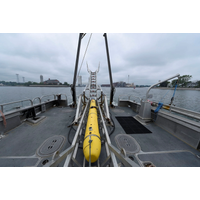
General Dynamics Launches New Bluefin-12
General Dynamics Mission Systems released the new Bluefin-12 autonomous unmanned underwater vehicle at Defense and Security Equipment International (DSEI) 2019.This new vehicle builds upon the proven Bluefin autonomy and uses shared Bluefin Robotics’ core capabilities, increased mission modularity and embedded intelligence to complete users’ long endurance, high-consequence and changing missions.The base Bluefin-12’s extended modularity supports the integration of user-designated sensors and payloads to deliver new mission-critical capabilities.The Bluefin Robotics core autonomy with
CODA Elects Plumb to Board of Directors
Coda Octopus Group, Inc. (CODA) (Nasdaq: CODA), a leader in real-time 3D sonar technology and real-time subsea intelligence, announced the election of J. Charles Plumb, Captain, USNR (Ret.) to its Board of Directors. Captain Plumb was elected at the company’s annual meeting of stockholders.Captain J. Charles Plumb is a retired U.S. Navy fighter pilot and former Vietnam Prisoner of War. He retired from the United States Navy after 28 years of service, and his military honors include two Purple Hearts, the Legion of Merit, the Silver Star, the Bronze Star, and the P.O.W. Medal. Since his
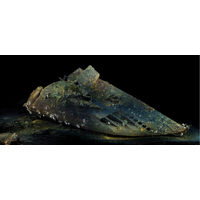
3D Models of Newly Discovered US WWII Sub
Aberdeen-based subsea 3D scanning specialists, Viewport3, have been collaborating with an eminent international explorer, Tim Taylor to process pioneering underwater 3D scans on the bow and stern of a US submarine which was lost in 1942.Viewport3 were contracted by Tim Taylor, CEO of New-York based Tiburon Subsea Services and founder of Ocean Outreach Inc, as part of his ongoing “Lost 52 Project”, which he states, “honors the men, their memory and their mission”. The project is responsible for discovery and mapping of 4 out of 8 of the US WWII submarines located to date.The
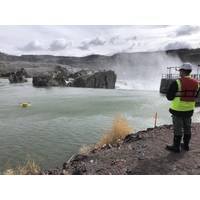
Picotech's Man-Portable Multibeam USV
support for RTK via VRS Now (with user’s subscription), RTK via base station with optional UHF modem, optional mounting points for tracking prisms and an optional Lidar.PicoPODs have been incredibly successful with early adopters. The systems have been deployed in the UK, US, Japan and Italy for hydrographic survey of ports, tidal barriers, rivers, tailing ponds, SAR and multibeam training courses
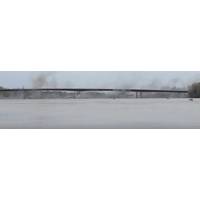
Sonar: Critical to Bridge Demolition, Recovery
What happens when a bridge or other structure is no longer in use and needs to be removed? There are several options, the most exciting of which is demolition.These jobs require caution and careful planning to guarantee safety and ensure that debris does not cause damage to the local waterways or roads. Four of the most common methods are bursting, hydraulic breakers, dismantling, and explosives.The Historic 1936 Highway 47 Bridge over the Missouri River was demolished this past spring. The old bridge was located 12’ from the new bridge that was built over the past several years. Being as close
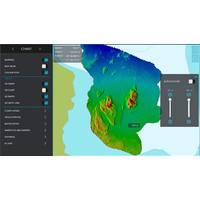
WASSP Updates S Series Multibeam Sonar
WASSP Multibeam has announced the release of two new firmware updates, CDX 4.0 and DRX 6.0, for its S Series multibeam sonar systems designed for the survey market, including dredging, dive site profiling, wreck hunting and many other survey activities.These updates will add a number of new functions to WASSP systems currently in use and, in most cases, can be installed by the user free-of-charge.A new Compensation Control adjusts for sea temperature and salinity, ensuring that the seafloor remains flat irrespective of different absorption losses in the water column.Whether using CDX or a third-party
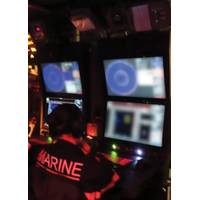
French Frigate Sonars Get an Upgrade
Since summer 2017, four vessels equipped with analog sonars have been upgraded using RTsys AS3i technology (Analog Surface Ship Sonar Improvement), which digitalized and improved the processing of signals rendered by sensors.Brittany-based company RTSYS does not only deals with AUV, subsea recorders and buoys, but can also display a full range of sonar systems such as handheld devices for divers or sonar retrofit. The latter of which led the French SME to lately offer in summer 2017 its services to the French Navy by upgrading analogue sonars on four frigates.In accordance with the ACORES public
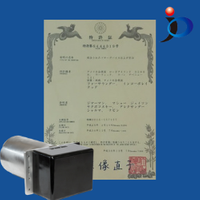
FarSounder Acquires Japanese Patent
FarSounder, a leader in 3D forward-looking sonar, has announced the issuance of their fifth patent.It was issued by the Japanese Patent Office, one of the largest in the world. This patent relates to their invention of integrated sonar devices and methods and is FarSounder's first issued in Japan."Since 2004, FarSounder has delivered reliable navigation to vessel operators. With this invention, we expand upon our innovative navigation tool. This technology will help assure our IP as we expand our product lines into new applications and markets." Says Matthew Zimmerman, VP of Engineering
SonarWiz 2019 Training Dates Announced
Chesapeake Technology Inc. will be holding several training workshops this spring, summer and fall. Classes are two or three days long and breakfast, lunch, snacks, sample data sets and two week demo licenses are provided. Travel and accommodations are not included in the registration fee.-- Spring training will be held May 14-15, 2019 at Stockton University, Atlantic City campus in New Jersey. We will show new features in SonarWiz 7.4 and cover sidescan, sub-bottom, bathymetry and mag processing. Cost is $495.00 and discounts available for users with current EMAs. Register online at:http://2ughld46m1gt
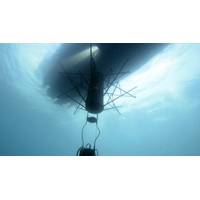
HELRAS 'Dipping Sonar' Onboard Seagull USV
In a Sea Acceptance Test (SAT) performed by the Israeli Navy, a Helicopter Long-Range Active Sonar (HELRAS) dipping sonar was successfully converted for operation onboard the Seagull, Elbit Systems’ Unmanned Surface Vessel (USV).Operating a dipping sonar onboard a USV significantly increases the operational working time and substantially enhances that detection capabilities and the effectiveness of Anti-Submarine Warfare (ASW).The Seagull autonomous multi-mission USV features switchable, modular mission payload suites and can perform, in addition to ASW, Mine Countermeasure missions (MCM)
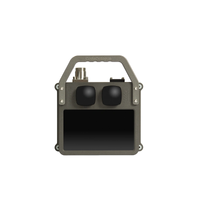
Coda Octopus Launches Echoscope4G Series
Coda Octopus launched its full series of patented Fourth Generation real-time 3D sonars. The Echoscope4G series includes the replacement high-performance Echoscope4G, the new Echoscope4G C500 and new Echoscope4G C500 Surface. The new series of sonars takes advantage of the new reduced form factor as they relate to size, weight, and power requirements.The Echoscope4G series is designed to enable customers to access the latest performance feature set including increased ping rate, reduced minimum range, Ping Pong alternating ping mode, and programmable TVG.The Echoscope4G and Echoscope4G C500
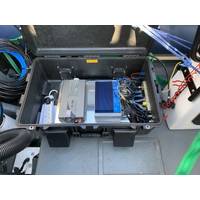
Swathe Services Provides New Product to ABP Humber
Swathe Services has announced a new bespoke custom Peli-case product which has been designed to fit the surface components of an R2SONIC Multi-Beam Echo-Sounder (MBES) SIM box and Inertial Navigation System. This product is specifically designed for use in open boats such as ABP Humber’s 5 meter RIB. The Peli-case incorporates all the required bulkhead connectors for external cable fittings; an inverter for operating off a DC battery power and a shrouded cooling system. As part of this small boat solution, ABP Humber also purchased a bespoke designed and built transom transducer



 February 2024
February 2024





